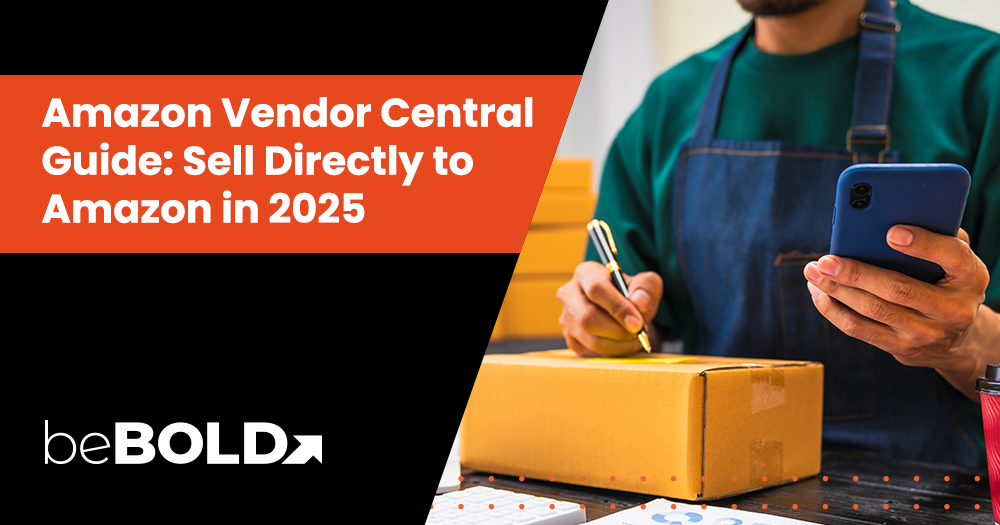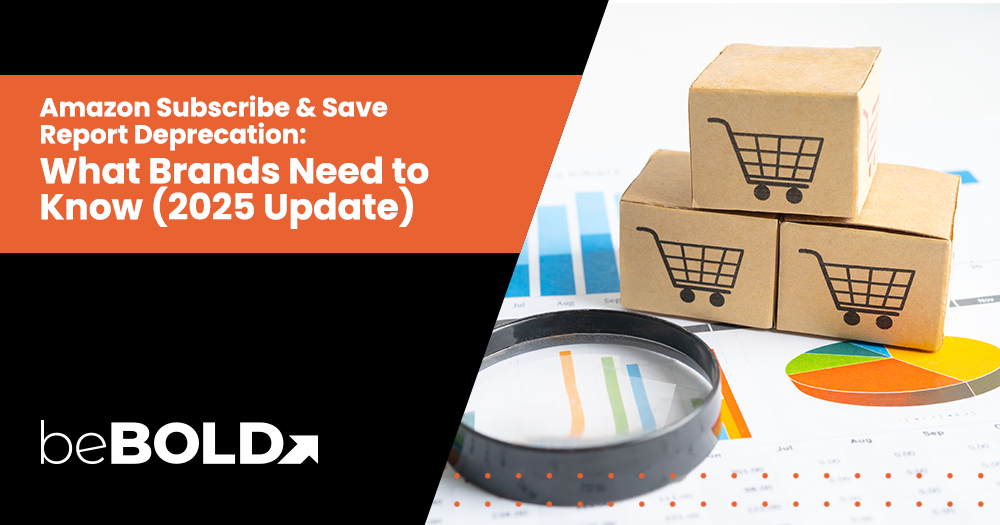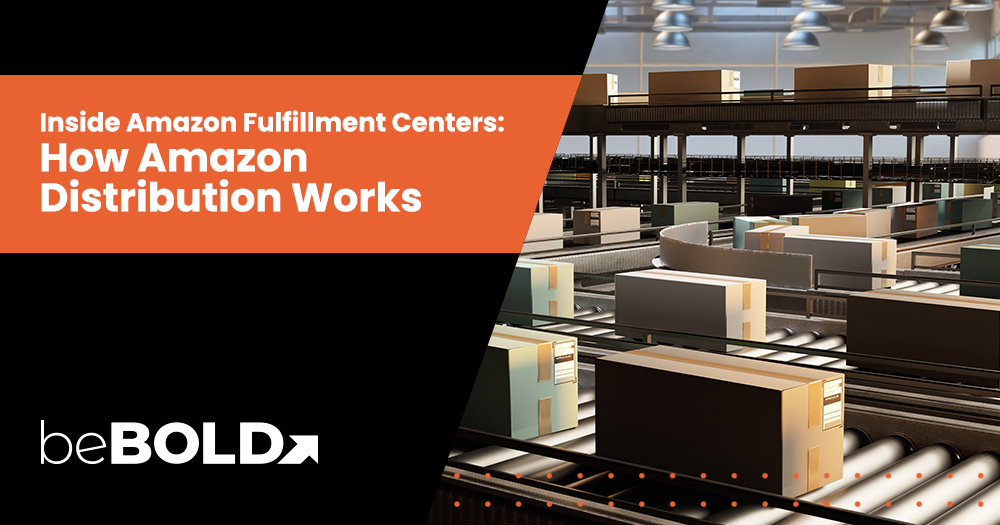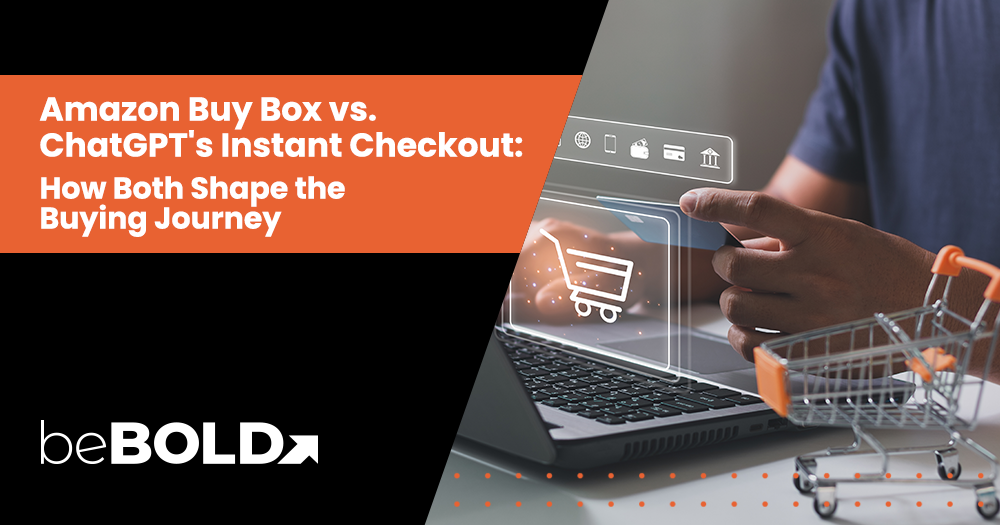Key Highlights
- Amazon Vendor Central lets brands sell wholesale directly to Amazon, which handles fulfillment, pricing, and customer service.
- It’s invite-only and best suited for high-demand products and established manufacturers looking to scale without managing logistics.
- Key benefits include increased exposure, Buy Box advantage, A+ Content, and access to Amazon Marketing Services (AMS).
- Drawbacks include limited pricing control, longer payment terms (60–90 days), and potential chargebacks or deductions.
- Unlike Seller Central, where sellers control pricing and fulfillment, Vendor Central follows a bulk, B2B model with Amazon as the retailer.
- A hybrid strategy using both platforms can combine reach, control, and profit across customer segments.
- Success requires optimized listings, proactive inventory management, and regular performance tracking through key KPIs.
- Top metrics include PO Fill Rate, On-Time Delivery, Chargeback Rate, Inventory Health, and AMS ROI.
- Amazon typically invites vendors with high-volume products, strong sales history, or trade show exposure.
- Vendor Central is ideal for wholesale-focused brands ready to scale with Amazon’s retail and logistics power.
What is Amazon Vendor Central?

Amazon Vendor Central is a platform where businesses sell products directly to Amazon, which then takes on the responsibility of selling and shipping those products to customers. Unlike third-party sellers on Amazon Marketplace, vendors supply their products in bulk to Amazon, which becomes the retailer. Recently, though, Amazon Premium Beauty and Professional Beauty categories have opened up to 3P sellers, expanding access to previously vendor-only spaces.
This platform is ideal for businesses that prefer not to handle customer interactions or fulfillment themselves, letting Amazon manage the sales process.
Is Vendor Central Right for My Business?

Several factors influence whether Amazon Vendor Central is the right fit for your business. If you’re ready to scale your product reach without handling customer interactions, Vendor Central might be a perfect match. However, weighing the pros and cons is important, keeping your business model and goals in mind.
Here’s what to consider:
- High Demand Products: If you have products with strong market demand, Vendor Central offers the potential for massive exposure and higher sales volumes.
- Profit Margins: While Amazon handles customer feedback, fulfillment, and marketing, you’ll likely earn lower margins compared to using an Amazon Seller Account, which provides more control over pricing.
- Product Listings & Images: Vendor Central lets you list detailed product descriptions, titles, and images on Amazon's platform, boosting visibility and attracting potential customers.
- Marketing Strategies: Use Amazon Ads and promotional features, like Featured Offers, to give your product extra exposure and drive traffic.
- Social Media & Reviews: Build your brand and reputation through positive reviews and customer feedback. Your product’s reputation can grow with strong, organic engagement from happy buyers.
- Professional Plan: Vendor Central offetrs a more professional, streamlined selling plan for larger businesses looking for more control over their listings.
- Amazon Store: With Vendor Central, your brand can have a dedicated space within Amazon, showcasing all your products under one roof and maximizing visibility.
- Tools & Resources: Use Amazon's keyword research tools and market research tools like Jungle Scout to optimize your listings and target high-converting keywords.
- Fulfillment Method: Amazon handles fulfillment, storage fees, and shipping logistics, but this also means giving up some control over inventory management—highlighting the key differences in FBA and FBM.
- New Products: For businesses launching new products, Vendor Central allows easy entry to a massive marketplace while minimizing your logistical responsibilities.
Amazon Vendor Central Login
Once you’ve been approved as a vendor on Amazon, accessing your Vendor Central account is the gateway to managing your business’s presence and performance on the platform. Whether you're handling orders, tracking shipments, or resolving payment issues, everything starts here.
1. Accessing the Vendor Central login page post-approval
After receiving your vendor approval from Amazon, you can log in through the Amazon Vendor Central Login Page. Use your registered business email and password. If you haven’t created your credentials yet, you’ll need to complete the invitation-based registration process provided by Amazon.
2. Managing purchase orders, shipments, and payments
Once logged in, you can manage all critical business operations from your dashboard:
- Purchase Orders – View, confirm, or adjust POs received from Amazon and monitor stock flow.
- Shipments – Track delivery statuses and coordinate timely shipments to Amazon's fulfillment centers.
- Payments – Monitor invoicing, remittances, and account balances for all processed transactions
3. Steps to reset a forgotten password
If you forget your login password:
- Go to the login page and click “Forgot Your Password?”
- Enter your registered email address.
- Follow the link sent to your inbox to set a new password.
- Use your updated credentials to log in.
4. Troubleshooting login issues and account reactivation
For login problems or a deactivated account:
- Double-check your credentials – Ensure there are no typos and that caps lock is off.
- Clear your browser cache or switch browsers – This can often resolve technical glitches.
- Contact Vendor Support – If your account is deactivated, reach out to Amazon Vendor Support for assistance and reactivation steps.
- Reach out for help – For persistent issues, the Vendor Central support team offers direct help through the support section within the portal.
Comparison: Amazon Vendor Central vs. Amazon Seller Central

When choosing between Amazon Vendor Central and Amazon Seller Central, it's essential to understand the key differences. Here's a concise comparison to help you decide which platform is right for your business:
|
Feature |
Amazon Vendor Central |
Amazon Seller Central |
|
Selling Model |
Sell to Amazon (Wholesale) |
Sell directly to customers (Retail) |
|
Pricing Control |
Amazon sets prices |
You control pricing |
|
Inventory Management |
Amazon manages inventory |
You manage your inventory |
|
Fulfillment |
Amazon handles fulfillment (FBA) |
You handle fulfillment or use FBA |
|
Advertising |
Limited advertising options (AMS) |
Extensive tools: Sponsored Products, Brands, Ads |
|
Branding |
Amazon manages listings |
You control product details and listings |
|
Payment Terms |
Net 60-90 payments |
Bi-weekly payments |
|
Profit Margins |
Lower margins due to wholesale pricing |
Higher margins with direct sales |
|
Pricing Control |
Amazon sets the prices of your products. |
You control pricing, allowing competitive adjustments. |
|
Logistics |
Amazon handles fulfillment and shipping; you send bulk shipments to Amazon. |
Choose between FBA or self-fulfillment; more effort but greater flexibility. |
Can I Sell via Both Amazon Vendor Central and Amazon Seller Central?

Using both Vendor Central and Seller Central is a viable strategy for brands seeking flexibility and expanded reach. Known as the Amazon hybrid model, this approach lets businesses leverage Vendor Central for bulk orders and high-volume exposure, while maintaining direct-to-consumer control and agility through Seller Central.
Benefits of a Hybrid Strategy:
- Broader Reach: Access both Amazon’s wholesale marketplace and the retail platform for direct sales. ➡️ Wholesale + Retail
- Greater Control: Maintain control over pricing, inventory, and advertising on Seller Central while leveraging Amazon’s marketing power as a vendor. ➡️ Pricing flexibility through Seller Central
- Diversified Revenue: Tap into different customer segments and maximize your product visibility.
Want to learn how to create a product and sell on Amazon? Vendor Central might be the right path for you, but it's essential to weigh the pros and cons before making your decision.
When to Use Which Model
|
Situation |
Best Platform |
|
Launching new SKUs |
Seller Central |
|
Scaling with Amazon logistics |
Vendor Central |
|
Testing pricing models |
Seller Central |
|
B2B bulk orders |
Vendor Central |
|
Premium control and branding |
Seller Central |
The Amazon Hybrid Strategy: Combining Vendor Central and Seller Central
The Amazon Hybrid Strategy combines the best of both Vendor Central and Seller Central, allowing businesses to maximize sales potential. This approach lets you sell directly to Amazon as a vendor while also offering your products directly to customers via Seller Central.
Advantages of the Amazon Hybrid Model

- Increased Visibility: Appear in both Amazon's marketplace and the wholesale platform, boosting brand exposure.
- Diverse Advertising Options: Leverage Amazon’s powerful advertising tools on both platforms.
- Better Control: Maintain pricing flexibility and inventory management on Seller Central while benefiting from Amazon’s marketing strength as a vendor.
Implementation Considerations:

- Inventory Management: Carefully track inventory across both platforms to avoid stockouts.
- Avoid Overlapping SKUs: Ensure unique SKUs on each platform to prevent confusion.
- Compliance: Stay aligned with Amazon's Vendor and Seller Central guidelines.
Ready to make a product to sell on Amazon? The hybrid strategy could be your next competitive edge!
Pros and Cons of Amazon Vendor Central

Understanding the strengths and limitations of Vendor Central helps businesses decide if the 1P model aligns with their goals and resources.
|
Pros |
Cons |
|
Increased Exposure through direct sales to Amazon. |
Limited Pricing Control due to Amazon's policies. |
|
Better Buy Box Chances with Amazon as a direct seller. |
Longer Payment Terms affect cash flow. |
|
Access to Amazon Marketing Services (AMS) for enhanced advertising. |
Complex Contract Negotiations can be time-consuming. |
|
A+ Content and other enhanced content options to showcase products. |
Risk of Chargebacks and Deductions from Amazon. |
|
Amazon Handles Inventory, Fulfillment, Shipping, and Customer Service. |
Competition with Amazon’s Own Private Label Products. |
Pros of Amazon Vendor Central
- Increased Exposure: By selling directly to Amazon, your products gain massive visibility in Amazon's marketplace, reaching millions of potential customers—yet it's worth weighing Direct Selling ang Wholesale to understand why many brands are now embracing direct selling.
- Better Buy Box Chances: Amazon’s Buy Box is often awarded to vendors, increasing your chances of winning the Buy Box and driving higher sales.
- Access to Amazon Marketing Services (AMS): Gain access to AMS, offering advanced advertising tools like sponsored products and display ads to target a wider audience.
- A+ Content: With A+ Content, you can improve your product listings with richer images, detailed descriptions, and enhanced features.
- Amazon Handles Fulfillment: Amazon takes care of inventory management, shipping, and customer service, allowing you to focus on other aspects of your business.
Cons of Amazon Vendor Central
- Limited Control Over Pricing: Amazon often sets the pricing for your products, limiting your ability to adjust it freely.
- Longer Payment Terms: Vendor payments can be delayed compared to Seller Central, potentially impacting your cash flow.
- Complex Contract Negotiations: Signing up as a vendor involves complex contracts and negotiations, which can be time-consuming.
- Risk of Chargebacks and Deductions: Vendors may face chargebacks and deductions, especially if there are discrepancies or delays in fulfillment.
- Competition with Amazon’s Own Products: Vendors might be at a disadvantage when competing against Amazon’s private label products in the same category.
- Vendor Chargebacks and Deductions: Vendor chargebacks and deductions can significantly eat into your margins, especially when issued for minor compliance issues.
Want to learn how to create a product and sell on Amazon? Vendor Central might be the right path for you, but it's essential to weigh the pros and cons before making your decision.
When to Choose Vendor vs. Seller vs. Hybrid – A Strategic Comparison
|
Criteria |
Vendor Central |
Seller Central |
Hybrid |
|
Pricing Control |
Low |
High |
Balanced |
|
Fulfillment |
Amazon handles |
Seller/ FBA |
Mixed |
|
Cash Flow |
Slower (60–90 days) |
Faster (bi-weekly) |
Diversified |
|
Setup Complexity |
High |
Medium |
High |
|
Ideal For |
Manufacturers |
DTC brands |
Scaling businesses |

The Amazon Vendor Central model uses a purchase order (PO)-based system, where Amazon buys and sells your products directly to customers.
Key Elements of the Payment Structure:
- Payment Timeline:
Payments are typically made 60–90 days after invoicing, depending on your contract terms. This extended cycle can affect your cash flow. - Payment Method:
Vendors are paid via ACH transfers or physical checks. - Invoice Requirements:
To receive timely payments, vendors must follow Amazon’s strict invoice submission guidelines. Errors or delays can result in processing issues. - Chargebacks & Deductions:
Amazon may issue chargebacks or deductions for:- Late shipments
- Inaccurate invoices
- Product discrepancies
- Contract-Dependent Terms:
Payment terms are based on negotiated contracts and can vary by product category.
Vendor Central Integrations with ERP, 3PL, and Retail Systems
Many businesses underestimate the need for integration across platforms. Vendor Central must be synced with your ERP, warehouse, or distributor systems to ensure smooth purchase order (PO) flow, accurate inventory, and real-time shipping updates.
- ERP Integration: Helps manage POs, invoicing, and inventory forecasting
- 3PL & Warehouse Coordination: Avoid stockouts and streamline fulfillment
- Common Tools: Cleo, SPS Commerce, or custom API integrations
Vendor-Created Content Options

Creating compelling content is key to boosting product visibility and sales on Amazon Vendor Central. Here's what vendors can leverage:
- A+ Content (Enhanced Brand Content): Add rich media like comparison charts, banners, and videos to highlight product features and brand story.
- Brand Stores: Create a multi-page branded storefront on Amazon to showcase your entire product line in one place.
- Product Detail Page Optimization: Customize product titles, bullet points, and descriptions with high-performing keywords to improve visibility.
- Enhanced Images & Videos: Use high-quality product images and demo videos to increase engagement and trust.
- Customer Reviews Integration: Showcase positive feedback to drive conversions and build credibility.
- Amazon Marketing Services (AMS): Promote your content with targeted ads across search results and product pages.
Best Use Cases for Vendor Central (vs. Seller)

Vendor Central shines in specific business scenarios. Here's when it’s the smarter choice over Seller Central:
- Wholesalers & Manufacturers: Ideal for bulk sellers who want to offload large volumes directly to Amazon.
- Brands Seeking Prestige: Products are labeled “Ships from and sold by Amazon,” which boosts credibility.
- High-Demand, Established Products: Better suited for items already proven in the market.
- Businesses Wanting Hands-Off Fulfillment: Amazon manages inventory, shipping, returns, and customer service.
- Retail-Ready Packaging & UPCs: If your products are retail-compliant, Vendor Central can streamline sales.
Joining Amazon Vendor Central
Amazon Vendor Central is an invite-only platform, and gaining access starts with catching Amazon’s eye.
The Vendor Recruitment Team typically scouts potential vendors from:
- Successful Seller Central accounts
- Marketplace sellers with high-demand or trending products
- Exhibitors at trade shows showcase unique, standout items
If your products fit the bill, Amazon will send you an invitation to join Vendor Central. Once you accept the terms, you'll unlock access to the platform and begin selling directly to Amazon—which then sells to customers.
Vendor Central isn't for everyone. It’s best suited for manufacturers and wholesalers who prefer letting Amazon manage:
- Inventory logistics
- Shipping and returns
- Customer support
For those who want less day-to-day selling hassle and more focus on production, Vendor Central could be the right fit.
beBOLD Tip: If reaching the right Amazon representative has been challenging, consider reading How to Contact an Amazon Vendor Manager to improve your chances of getting timely support.
5 Tips to Be Successful As a Member of Amazon Vendor Central
1. Optimize Your Product Listings

- Craft compelling product titles, descriptions, and use high-quality images.
- Perform keyword research to boost visibility.
- Add A+ Content to enhance product detail pages and improve conversions.
2. Leverage Amazon Marketing Services (AMS)

- Run targeted ad campaigns using Sponsored Products, Sponsored Brands, and Sponsored Display.
- Use ads to increase product visibility, drive high-intent traffic, and boost sales.
3. Stay on Top of Inventory & Lead Times

- Monitor inventory levels and manage lead times to avoid stockouts or delays.
- Ensure smooth operations through accurate forecasting and efficient supply chain management.
4. Keep Customer Satisfaction High

- Although Amazon handles customer service, your product quality matters.
- Track customer reviews and feedback regularly to address any recurring issues.
- Continuous improvement ensures positive ratings and strong brand perception.
5. Analyze and Act on Performance Data

- Regularly review your Vendor Central dashboard to track performance metrics.
- Use insights to refine your listings, pricing, ads, and inventory strategies.
- Data-driven decisions drive sustainable growth.
Mastering these areas will help you build a resilient, high-performing business on Vendor Central.
Key Performance Indicators for Vendor Success

Tracking the right KPIs is crucial to evaluate and improve your performance on Amazon Vendor Central. Here are the most important metrics to monitor:
- Purchase Order (PO) Fill Rate: Measures how efficiently you fulfill Amazon’s orders. Aim for >95%.
- On-Time Delivery Rate: Ensures your shipments reach Amazon within the agreed timeframe—key to vendor reliability.
- Chargeback Rate: Indicates penalties for non-compliance. Keep it low to avoid revenue loss.
- Sales Performance: Track revenue trends across products, categories, and campaigns.
- Customer Returns & Refunds: High rates may signal quality or listing issues—monitor closely.
- Inventory Health: Manage stock levels to avoid excess inventory or stockouts.
- Buy Box Win Rate: Higher win rate means greater visibility and conversions for your products.
- Advertising ROI (AMS Performance): Measure how effectively your ad spend converts into sales.
- Content Score / A+ Content Usage: Reflects how well your listings engage customers and communicate value.
By regularly tracking key performance indicators such as purchase order fill rates, chargebacks, lead times, and marketing spend efficiency, you gain clear visibility into your operational health and profitability. These insights empower your team to make data-driven decisions, strengthen retailer relationships, and proactively address issues before they escalate—ensuring your Vendor Central partnership remains sustainable and growth-focused.
To streamline this process, many brands leverage Amazon Vendor Central software for reporting, which helps centralize data and uncover actionable insights more efficiently.
Supercharge Your Brand with beBold Digital
Looking to scale your brand digitally? beBold Digital is your go-to partner for performance-driven growth. From SEO that ranks to ads that convert, we specialize in delivering ROI-focused digital marketing solutions tailored to your business goals. Whether you’re a startup looking for traction or an established brand ready to expand, our team crafts bold strategies that make a real impact.
Ready to grow? Schedule your free consultation today and let’s build something bold together.
Conclusion
Amazon Vendor Central offers a powerful platform for manufacturers and suppliers to sell directly to Amazon, making it ideal for scaling operations without managing end-customer logistics. With access to robust tools and programs like Amazon Vendor Services, Amazon Vine Program, Amazon Retail Analytics (ARA) Premium, and Amazon Brand Analytics, vendors can gain deep market insights, boost product visibility, and enhance decision-making. For brands focused on wholesale growth and retail partnerships, Vendor Central can be a game-changer.
Amazon Vendor Central Guide: Frequently Asked Questions
What is Amazon Vendor Central?
Amazon Vendor Central is an invite-only platform where manufacturers and suppliers sell products directly to Amazon, which then sells to customers.
How does Vendor Central differ from Seller Central?
In Vendor Central, you sell to Amazon wholesale. In Seller Central, you sell directly to consumers, maintaining control over pricing and fulfillment.
What are the benefits and challenges of using Vendor Central?
Benefits include wider reach and Amazon-handled logistics. Challenges involve less control over pricing and longer payment cycles.
Can I operate both Vendor Central and Seller Central accounts simultaneously?
Yes, with proper strategy. This hybrid model helps expand reach and optimize product placement across both channels.
How do I get invited to join Amazon Vendor Central?
Amazon invites successful sellers, trade show exhibitors, or those with high-demand or unique products to join Vendor Central.
What are Amazon Vendor payment terms?
Vendors typically receive payments in 30, 60, or 90 days, depending on agreed terms with Amazon.
What are chargebacks and how do I avoid them?
Chargebacks are fees for non-compliance in packaging, labeling, or shipping. Avoid them by strictly following Amazon’s guidelines.
What tools are included in Vendor Central?
Tools include Amazon Marketing Services (AMS), A+ Content, Retail Analytics, and forecasting tools for inventory and performance.
Can small businesses use Vendor Central?
It’s less common. Due to its scale and requirements, Vendor Central is more suitable for high-volume manufacturers or wholesalers.
What’s the minimum volume Amazon looks for in a vendor?
There’s no official threshold, but Amazon typically looks for vendors who can consistently meet large order volumes.
Ready to grow with beBOLD? Schedule your free consultation today.









Comments